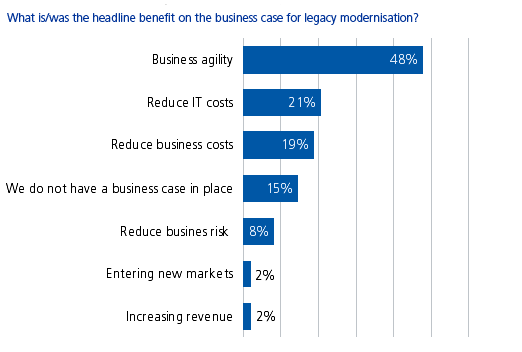Insurers are tackling the challenge of legacy systems head on. Almost half of life insurers report being well under way in their legacy modernisation projects.
Legacy IT is an intrinsic part of any established insurer, and this legacy is placing constraints on business flexibility, so the imperative of addressing this legacy comes as no surprise. In a new report, Still Seeing the Shadow: Groundhog Day for Legacy Modernisation (Life/Health Edition), Celent provides an update on the progress of life insurers in their journey of updating their legacy infrastructure and systems.
“Business agility will continue to headline most business cases,” says Catherine Stagg-Macey, Senior Analyst with Celent’s Insurance group and author of the report. “We have no doubt that early movers in this area will gain competitive advantage with their agile business processes.”
Celent maintains that it is imperative that the legacy problem is addressed. How this is done is dependent on current IT environment, business pain points, and the company's appetite for risk. The maturity of SOA and modern PAS solutions makes it more possible to tackle the challenge of legacy. And with careful deign and planning, insurers can avoid creating the next generation of legacy.

The report looks at the impact of legacy and how this can be measured. It goes on to discuss progress to date and provides an overview of emerging strategies and operational considerations being employed by insurers. The final chapter provides some thoughts on tackling this problem.





